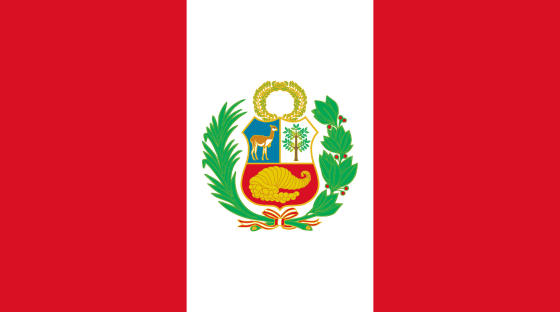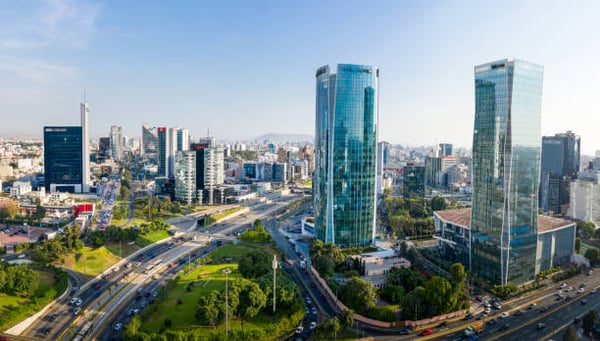Perú
Peru's Rise: Economic Growth and a Booming Tech Sector

Overview
Located northwest of South America, Perú spans the Pacific coastal plains to the mountainous Andes in the east. It is one of 17 nations identified by Conservation International as “megadiverse”, denoting nations that are home to most of the world’s species and a high number of endemic species.
Despite a current slowdown, Perú has made impressive progress in economic growth and poverty reduction since the turn of the century. Macroeconomic stability, openness to trade, and favorable international conditions are identified by the World Bank as factors that have underpinned a rise in per capita income from 2002 to 2022 that outstripped the global average rate.
Factors in Perú’s favor include low public debt, strong international reserves, and a credible central bank. Many businesses see Perú as an investment opportunity, with service providers in other Latin American countries setting up operations there. Focusing on web and mobile applications, they only choose the best and brightest software engineers from Perú’s top universities.
The Accelerance Global Network is the most curated list of high-quality global teams ever assembled.
1100
Developers
Total number of developers in our certified partner network by country
2
Certified Partners
Total number of certified partners in our global network by country.
10hrs
Time Travel (From NY)
Average flight time from NY to the major cities in the country.
89
Partner Innovation capability
The score reflects investment in STEM progrms and IT funding by country.
90
Partner Skill Level
Level of workforce skills and quality of education, including factors such as digital literacy, interpersonal skills, etc.
63
Partner Global Competitiveness
National productivity based on 12 core pillars, including government policy, infrastructure, economic stability, etc.
High
Software Outsourcing Readiness
Overall rating, based on the maturity of the tech sector, socio-political conditions, and on-the-ground research by Accelerance.

Talent Pool & Education
Perú has made good progress rolling out regional fiber-optic networks as part of an initiative to connect the entire country digitally and lay a foundation for future ICT infrastructure. The country has a low illiteracy rate and ICT skills are at a higher level than the Latin American and Caribbean average. Investment in R&D and innovation has been increasing partly due to greater government commitment to science and technology. The government has designed a National Digital Talent Strategy to advance digital talent development, emphasizing diversity and promoting women's participation in technology.
Local initiatives include Laboratoria, a coding school for women that has already graduated more than 3,800 developers and whose graduates have been employed by 1100 companies, and Crack the Code, which teaches computer science and the basics of programming to school students. Despite technology gaps in the education sector, Peru has around 20 EdTech companies that have received more than $20 million in financing from national and foreign investors.
Language
The official language of Perú is Spanish, with more than 84% of the population speaking it as their first language. Around 11% of the population speak English as their second language. Peruvian engineers are fluent in English and familiar with the business culture and mindset of the US.

Economic Outlook
After a strong recovery from the pandemic, the economy contracted by 1.29% in the year to September 2023, a far worse performance than economists anticipated. Significantly, the country’s key mining sector was hit hard, with production ceasing at many mines during prolonged political instability. Perú is the world’s second-biggest supplier of copper and zinc, and third for silver. In total, mining produces 60% of the country’s exports.
Both public debt (34% of GDP) and sovereign risk spreads remain among the lowest in the region. After declining sharply during the second half of 2023, inflation fell to a shade above 3% in early 2024 and is expected to soon fall within the upper end of the 1-3% target range. However, the World Bank reports that poverty levels remain worse than before the pandemic, which hit Perú hard both in terms of health system collapse and job losses.
Addressing the country’s over-reliance on mining in a time of climate change impacts presents a major challenge, along with tackling persistent inequalities, and structural constraints that limit formal job creation.
Political Conditions
Highly polarized politics and policy uncertainty weighed heavily on both governability and the economy throughout 2024. Perú has established democratic institutions and undergone many peaceful transfers of power. However, in recent years, corruption scandals have eroded public trust in government, while bitter divides within a fragmented political class have repeatedly produced political turmoil.
Freedomhouse.org, which measures political rights and civil liberties in 195 countries, has downgraded Perú’s overall status from “Free” to “Partly Free”. The country’s score declined after (now former) leftist president Pedro Castillo was impeached and arrested in late 2022 after attempting to dissolve the legislature and rule by decree. Protests by his supporters led to deadly clashes with security forces. Castillo was replaced by his vice-president, Dina Boluarte, who is facing an inquiry into the Government’s response to the protests.
Boluarte is deeply unpopular, according to polls, and Peruvians remain angry about rampant corruption among the political class, the repression by security that killed dozens of citizens protesting in support of Castillo in late 2022 and early 2023 after a coup attempt by former President Pedro Castillo, and rising crime. An informal coalition with centrist and right-wing parties appears fragile and the risk remains high that Boluarte will leave the presidency before her term ends in 2026.
Learn more about our customer stories.
Looking for a customer story in a specific technology or industry? Discover compelling customer narratives within a specific technology or industry that resonate with your unique software development needs.


%20(1).png?width=300&name=WEBSITE%20Stop%20Chasing%20Low%20Hourly%20Rates%20Unlock%20the%20True%20Value%20of%20Offshore%20Development%20(450%20x%20253%20px)%20(1).png)



